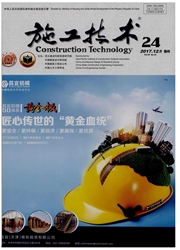

 中文摘要:
中文摘要:
以汶川灾后重建的唐家山公路隧道为背景,采用FLAC^3D软件建立隧道三维模型,模拟了隧道在不同施工方式中围岩随时间和空间变形的过程,并结合现场实测数据,重点分析了拱顶沉降、水平收敛和掌子面的挤出位移。结果表明:软岩隧道围岩稳定很大程度上受到隧道的时空效应影响,施工中要综合选择开挖方式,既要考虑围岩先行变形,也要考虑掌子面的挤出变形,同时通过早期闭合支护来控制围岩的后方变形。
 英文摘要:
英文摘要:
Taking Tangjiashan highway tunnel, which was reconstructed after the Wenchuan earthquake as background, a three-dimensional model was constructed for the tunnel using software FLAC^3D, to simulate the rock deformation with time and space in different ways of tunnel construction. Combined with the field measurement, the vault settlement, the level convergence and the extruded displacement of the working face were analyzed in detail. The results show that stability of surrounding rock in soft rock tunnel is significantly influenced by temporal-spatial effect of the tunnel. As a result, comprehensive considerations should be made during the selection of excavation methods, i.e. both the rock deformation and the extruded deformation of the working face. At the same time, the rear rock deformation should be controlled by early closed supporting.
 同期刊论文项目
同期刊论文项目
 同项目期刊论文
同项目期刊论文
 期刊信息
期刊信息
